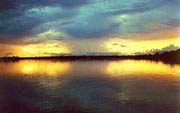Protecting our World Heritage
The UNESCO World Heritage Committee opened its annual meeting today in Brasilia. The Committee will add new outstanding natural and cultural places to the list of World Heritage sites. IUCN plays a key role in the meeting as the advisory body assessing natural sites and recommending new nominations to the World Heritage list.

Photo: Protected Planet
“Conserving the world’s most significant natural assets will be under the spotlight in Brasilia,” says Julia Marton-Lefèvre, Director General of IUCN. “Many natural World Heritage sites are havens of thriving biodiversity and protecting them are a key part of the response to the extinction crisis we are facing.”
Thirty-two new sites have been submitted for inscription this year. Six of them are natural sites: Danxia (China), Pitons, cirques et remparts of Reunion Island (France), Phoenix island protected Area (Kiribati); dinosaur Ichnites of the Iberian Peninsula (Portugal/Spain); Putorana Plateau (Russian Federation) and the Mountains of the Pamirs (Tajikistan).
The Central Highlands of Sri Lanka, its Cultural and Natural Heritage, is being considered as a mixed cultural and natural site. Extensions of two existing sites, Bulgaria’s Pirin National Park and Switzerland’s Monte San Giorgio into Italy, were also proposed.
IUCN also evaluates the state of conservation of existing natural sites and recommends those under threat to be put on the Danger List.
“World Heritage sites are famous worldwide; they generate great pride and boost the economies of local communities. But just because a site is listed doesn’t guarantee it will be well conserved and some of them are under serious threat,” says Tim Badman, Head of IUCN’s World Heritage Programme.
“More support, including staff and financial resources should be made available to address challenges such as illegal exploitation of resources, deforestation, real estate development and the degradation of habitats,” says Mariam Ali, World Heritage Conservation Officer.
IUCN has carried out rigorous evaluations of the candidate sites throughout the past year. IUCN’s World Heritage team conducted monitoring missions to eleven existing sites, including five on the list of World Heritage Sites in danger. IUCN will also launch a study on the value of deserts for World Heritage.
“Deserts cover up to one third of the earth’s land surface and are home to 500 million people. They generate income for local communities, but once damaged, their rich ecosystems take a long time to recover because of the slow rate of biological activity in arid areas,” says Tilman Jaeger, World Heritage Project Management Officer “IUCN calls for more deserts to be considered and protected as World Heritage sites.”
For more information or to set up interviews, please contact:
Pia Drzewinski, IUCN Media Relations, m +55 61 8125-8748 e pia.drzewinski@iucn.org
Brian Thomson, IUCN Media Manager m +55 61 8219-4408, e brian.thomson@iucn.org
Photos, audio and video material are available at/from:
https://www.iucn.org/knowledge/news/focus/2010_worldheritage/



